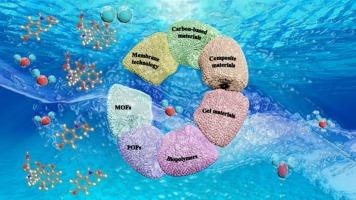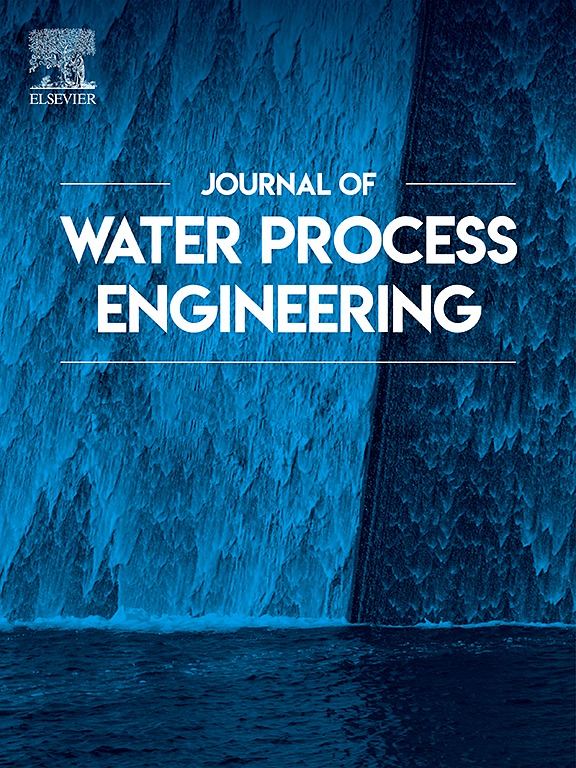Review: Development and application of porous materials to antibiotic drug adsorption and removal
IF 6.3
2区 工程技术
Q1 ENGINEERING, CHEMICAL
引用次数: 0
Abstract
The misuse of antibiotics resulted in their release into the environment and food chain, leading to environmental pollution and posing a threat to human health. Porous adsorption materials possessed characteristics such as a large specific surface area, high porosity, easy surface modification and novel functionality, which had demonstrated excellent efficacy in removing antibiotics. Adsorption, as a crucial technology for concentrating residual drugs in the environment and food substrates, has garnered significant attention from researchers in recent years. This review provided an overview of the performances of various porous materials (including carbon-based materials, organic porous materials, organic porous polymers, biopolymers, gel materials, composite materials and membrane technologies) as adsorbents for antibiotics removal. It also discussed factors influencing adsorption effectiveness (such as pH, initial concentration of antibiotics, temperature), adsorption mechanisms and the current application and research progress in antibiotic adsorption. Finally, the future research directions and trends were proposed along with suggestions for future research needs. The review offered valuable insights for future studies on isolating, enriching, adsorbing and removing prohibited or restricted antibiotic drugs from environmental samples, water sources, animal-derived foods and biological samples.

回顾:多孔材料在抗生素药物吸附和去除方面的开发与应用
抗生素的滥用导致其释放到环境和食物链中,造成环境污染并威胁人类健康。多孔吸附材料具有比表面积大、孔隙率高、表面易改性、功能新颖等特点,在去除抗生素方面表现出卓越的功效。作为浓缩环境和食品基质中残留药物的重要技术,吸附技术近年来备受研究人员关注。本综述概述了各种多孔材料(包括碳基材料、有机多孔材料、有机多孔聚合物、生物聚合物、凝胶材料、复合材料和膜技术)作为吸附剂去除抗生素的性能。报告还讨论了影响吸附效果的因素(如 pH 值、抗生素初始浓度、温度)、吸附机理以及抗生素吸附的应用现状和研究进展。最后,提出了未来的研究方向和趋势,以及对未来研究需求的建议。该综述为今后从环境样品、水源、动物源性食品和生物样品中分离、富集、吸附和去除禁用或限用抗生素药物的研究提供了宝贵的见解。
本文章由计算机程序翻译,如有差异,请以英文原文为准。
求助全文
约1分钟内获得全文
求助全文
来源期刊

Journal of water process engineering
Biochemistry, Genetics and Molecular Biology-Biotechnology
CiteScore
10.70
自引率
8.60%
发文量
846
审稿时长
24 days
期刊介绍:
The Journal of Water Process Engineering aims to publish refereed, high-quality research papers with significant novelty and impact in all areas of the engineering of water and wastewater processing . Papers on advanced and novel treatment processes and technologies are particularly welcome. The Journal considers papers in areas such as nanotechnology and biotechnology applications in water, novel oxidation and separation processes, membrane processes (except those for desalination) , catalytic processes for the removal of water contaminants, sustainable processes, water reuse and recycling, water use and wastewater minimization, integrated/hybrid technology, process modeling of water treatment and novel treatment processes. Submissions on the subject of adsorbents, including standard measurements of adsorption kinetics and equilibrium will only be considered if there is a genuine case for novelty and contribution, for example highly novel, sustainable adsorbents and their use: papers on activated carbon-type materials derived from natural matter, or surfactant-modified clays and related minerals, would not fulfil this criterion. The Journal particularly welcomes contributions involving environmentally, economically and socially sustainable technology for water treatment, including those which are energy-efficient, with minimal or no chemical consumption, and capable of water recycling and reuse that minimizes the direct disposal of wastewater to the aquatic environment. Papers that describe novel ideas for solving issues related to water quality and availability are also welcome, as are those that show the transfer of techniques from other disciplines. The Journal will consider papers dealing with processes for various water matrices including drinking water (except desalination), domestic, urban and industrial wastewaters, in addition to their residues. It is expected that the journal will be of particular relevance to chemical and process engineers working in the field. The Journal welcomes Full Text papers, Short Communications, State-of-the-Art Reviews and Letters to Editors and Case Studies
 求助内容:
求助内容: 应助结果提醒方式:
应助结果提醒方式:


